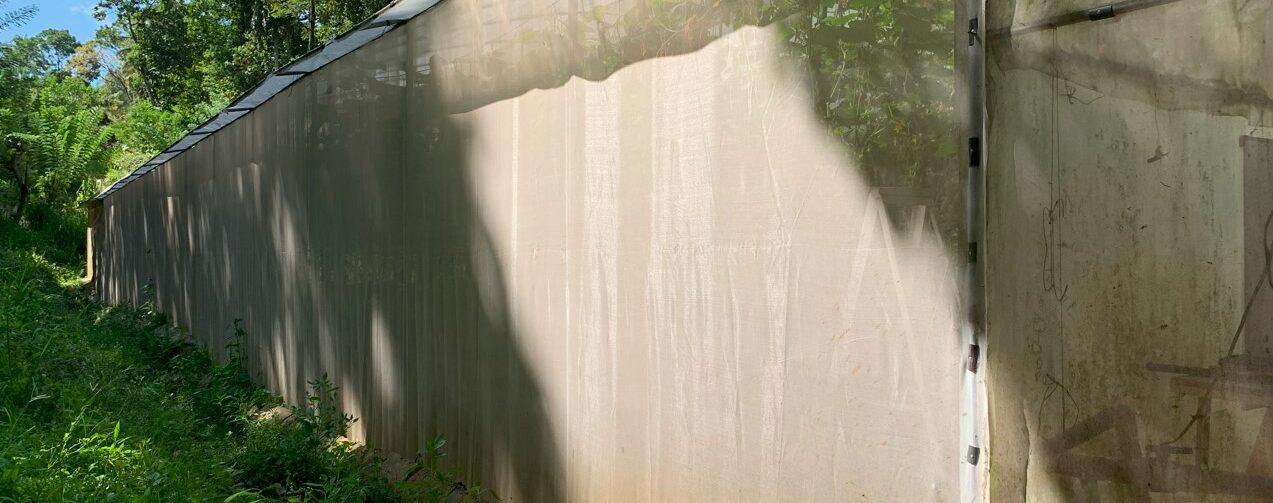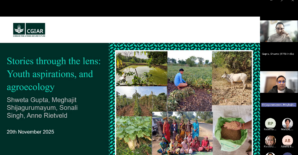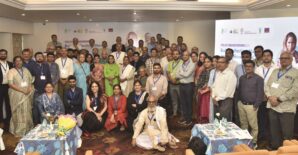Increasing urbanization is changing the demographic landscape of transforming countries globally. The world’s population residing in cities will increase from 55% in 2018 to a projected 68% by 2050. This is a trend that might come at the expense of farmland especially in quintessentially densely populated island nations like Sri Lanka. Urbanization is both a cause and effect of structural transformation, with rising incomes and shifts in occupations. Urban centers are set to drive food demand up by up to 35–56% by mid-century. This surge places considerable stress on food systems, which already contribute quarter or more to global greenhouse gas emissions mainly from land conversion, crop production, and food transportation. (Al-Qubati et al., 2024).
The concept of "food miles", i.e., the distance between the place of production and consumption of food is now understood to account for around one-fifth of total food system emissions particularly driven by highway and trucking transport. Considering these environmental and logistical challenges, shortening supply chains through urban and peri‑urban agriculture (UPA) has gained traction. This is supported by a comprehensive review that confirms UPA supports local food security, climate-smart supply chains, and resilient urban systems. (Srinivasan and Yadav, 2023).
The salience of food mile conceptualization was further established by COVID‑19 pandemic that was essentially a supply chain shock to the agri-food sector even when overall food production was maintained in most locations. Polyhouses in urban and peri-urban agriculture emerge as climate smart and resilient system among the diverse options in this land-preserving and supply chain-shortening space, viz. vertical farming, hydroponics. The C-SUCSeS project therefore explored the potential of key technology of polyhouses in urban and peri-urban agriculture of Sri Lanka as part of CSA landscape in Sri Lanka.
Sri Lanka’s Urban Agriculture Landscape and the Polyhouse Model
Polyhouses comprise enclosed, climate-controlled structures made of polyethylene or glass, enabling year-round crop production. Polyhouses offer multiple benefits, including improved water use efficiency, protection from pests and extreme weather, and higher productivity per square meter.
Under the C-SUCSeS Project, a climate-smart technology scaling initiative led by SAC, IFPRI and funded by IFAD and SDF, polyhouses are being promoted as part of Sri Lanka's national strategy to strengthen food systems. In the context of Global South, no CSA technology can scale up without addressing the question of livelihood. The most powerful case for this CSA technology, i.e., polyhouses, is thus transforming urban livelihoods while contributing to mitigating climate change. Given the recent economic crisis that led to severe stresses on livelihoods of the poor, through field visits and interactions, we present a qualitative case study in Sri Lanka on polyhouses as a promising option to scale up as a CSA technology addressing environmental, economic, and social challenges together.
Case Study 1: Mr. Harish Chandra – From Textile Worker to Urban Polyhouse Farmer
Mr. Harish Chandra’s story exemplifies how polyhouse technology can support resilient livelihoods amidst crises. Formerly employed in Sri Lanka’s textile industry, Mr. Chandra migrated to Pakistan in search of stable income after the country’s economic collapse led to widespread job losses and soaring inflation. Unfortunately, COVID-19 disrupted his employment abroad, forcing him to return home to Colombo, jobless and uncertain about the future. It was during this transition that Mr. Chandra met officials from the Ministry of Agriculture, Livestock, Land, and Irrigation, Sri Lanka, who were promoting polyhouse farming under the Climate-Smart Agriculture (CSA) initiative. Motivated by necessity and intrigued by the potential of CSA technologies particularly in terms of their economics, he received training and set up a polyhouse in his peri-urban neighborhood.
His early attempts at growing green chilies and bell peppers met with failure due to limited local demand. That reflects the primacy of demand in any successful technology and also the need and ability to withstand shocks in initial periods of a business. Indeed, Mr. Chandra leveraged his background in economics to conduct market research. He identified cucumber as a high-demand, export-oriented crop and shifted his focus accordingly. This marked a turning point in the polyhouse-based enterprise.
As a true entrepreneur, Mr. Chandra subsequently refined the mechanics of polyhouse farming. He learnt the importance of:
- Optimizing polyhouse orientation based on sun’s position.
- Monitoring daily weather fluctuations.
- Maintaining internal temperature control.
- Preventing pest outbreaks using pump sprayers.
- Adjusting for humidity and irrigation needs.

These learnings enabled him to grow export-quality cucumbers sustainably, even with limited land and ongoing climatic shocks. Despite persistent challenges such as access to affordable fertilizers, a consequence of Sri Lanka’s ongoing economic crisis which was marked by a complete ban on agrochemicals including fertilizers. His story is emblematic of a broader movement of how polyhouse farming is empowering urban and peri-urban farmers to reimagine food production, earn livelihoods, and contribute to local food security and climate resilience.
Case Study 2: Women Growing Change - How Polyhouses Empower Sri Lanka’s Urban Homemakers
In a quiet corner of Colombo, what began as a homemaker’s hobby has blossomed into a beacon of entrepreneurship and resilience. Ms. Puspa Samaratunga, once tending to a modest backyard garden behind her home, now stands at the forefront of a growing movement that urban women are reclaiming food production through polyhouse farming. Farming had always been a quiet passion for Ms. Samaratunga. With her husband employed in the construction sector, she abstained from formal sector employment. However, when her husband was diagnosed with cancer, medical expenses soared, household income shrank, and inflation eroded their savings. Faced with these challenges, she turned her attention back to the soil, but this time, with a purpose.
With support from local agriculture officials, Ms. Samaratunga enrolled in targeted training workshops that introduced her to polyhouse technology-climate-controlled structures ideal for cultivating high-value horticultural crops in small spaces. She also gained access to marketing support through a partner organization, helping her navigate the often-tricky terrain of crop sales and pricing.
“It was like returning to something I always loved,” she says. “Only now, it had become a livelihood.”
Her instinct for farming, paired with formal training, saw her succeed relatively quickly. She was later selected to join an entrepreneurship program promoted by the Provincial Department of Agriculture in Colombo. There, she deepened her knowledge not only in horticulture but also in farm management, leadership, and strategic planning. Today, Ms. Samaratunga is a recognized face in local agriculture circles. She is regularly invited to forums, community workshops, and knowledge-sharing sessions where she inspires other women to see farming not just as subsistence, but as a scalable enterprise.
Case Study 3: From Rejection to Blossoming - Ms. Yamila Guruwartene’s Floriculture Journey
Another standout story is that of Ms. Yamila Guruwartene, who faced initial resistance from her own family, particularly her husband, when she proposed starting a polyhouse on their property. But driven by determination and a vision for self-reliance, she pushed forward. What began as a simple experiment in ornamental plants has now flourished into a thriving floriculture business. Through training in post-harvest technologies, polytunnel construction, and advanced gardening techniques, Ms. Guruwartene built both the technical and business techniques needed to succeed.

Equipped with leadership skills from specialized programs, she now makes independent decisions about crop selection, marketing strategies, and product innovation, thus becoming a symbol of empowerment for other women looking to break into agribusiness. To date, Ms. Guruwartene has mentored nearly 30 women, helping them navigate their own polyhouse journeys. Her home is more than a farm-it is a classroom, a support center, and a seedbed for female-led change.
Opportunities and Obstacles
While these success stories highlight the potential of polyhouses as CSA in transforming lives, the road is still marked with obstacles. Farmers consistently cite the high initial investment, complexity of managing controlled environments, and marketing risks as major hurdles. “It’s not plug-and-play,” Chandra admits. “You must learn the science behind it like sunlight, soil moisture, airflow. But once you do, it is a powerful tool.”
Despite these challenges, what sets these farmers apart is their willingness to adapt, learn, and share. They are not only growing crops but cultivating networks and encouraging a growing community of urban farmers to reclaim control over their economic futures.
A Model for the Future
The stories of Ms. Samaratunga and Ms. Guruwartene are emblematic of a broader shift-of women stepping into leadership roles within climate-smart urban agriculture. With the right support, training, infrastructure, and market access the polyhouse model holds the potential to create an inclusive and resilient development ecosystem across Sri Lanka’s urban landscape. And for many, it all begins with a seed, a small structure, and the courage to grow beyond the expected.
References
- Al-Qubati, Abdulhakeem & Zhang, Lulu & Forkel, Matthias. (2024). Urban and peri-urban agriculture under climate change: A review on carbon emissions and sequestration. Sustainable Cities and Society. 105830. 10.1016/j.scs.2024.105830
- Kumar, Srinivasan & Kumar Yadav Vineet. (2023). An integrated literature review on Urban and Peri-urban farming: Exploring research themes and future directions, Sustainable Cities and Society. Volume 99. 104878, ISSN 2210-6707, https://doi.org/10.1016/j.scs.2023.104878.



